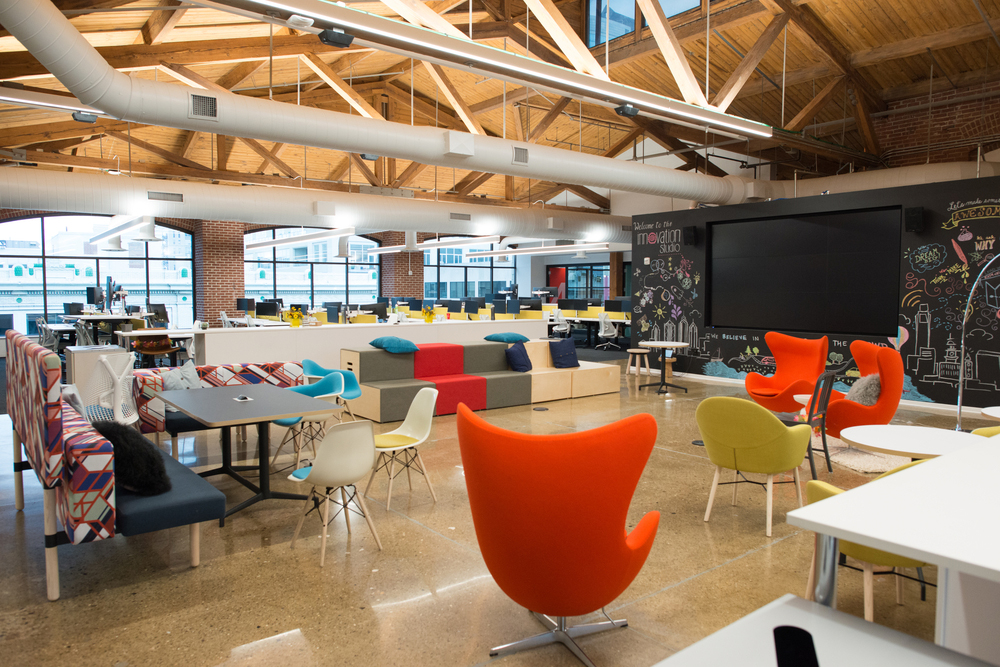One way to attract talent to your organization is through unique perks and benefits. We’ve been hearing how workers would prefer to have flexible schedules and opportunities to work from home more often, but are these benefits actually preferred by all employees? The answer may surprise you!
B2B research, ratings, and reviews firm—Clutch–has released a new report, “What Employees Want in an Office Space,” which highlights what employees are looking for in an office environment. According to the findings, 83% of workers prefer to work in an office at least some of the time, over being fully remote. The survey also found that a majority (68%) of employees work in a traditional office setting, which answers our question: office work is still preferred over telecommuting arrangements.
The latest Clutch report can be used to help create an office space that appeals to employees and allows them to be as productive as possible. By using these findings, you too can create an office environment that appeals to your workforce, and in turn, should help attract and retain all talent levels.
Wait, Not So Fast …
While the report finds that a majority of workers still utilize an office setting, 17% of respondents say they would prefer to work entirely remote, rather than work in an office environment. Kristen Herhold—Senior Content Developer and Marketer for Clutch—offers some advice for trying to lure workers back into the office: “Businesses should create an office space that makes employees look forward to coming to work”
“Employers should ensure there is a space for remote workers when they do come to the office,” says Herhold. “Employees value time in-office because it helps them feel like they are part of a company’s culture.” Herhold also suggests that employers should design an inclusive office space to accommodate all employees, whether they’re in the office full-time or not.
“The best offices know how to be comfortable and convenient enough where it encourages employees to be in the office during the workday rather than wanting to be at home doing work,” says Max Falb, a digital marketing strategist at Fueled—a mobile app design and development company. “It also allows people to choose how they want to work and interact with people and their environment on a daily basis.”
For employees who do choose to go to the office, where they work within that environment vastly differs from where employers think they should work. Clutch finds that 52% of employees would prefer to have their own private office, even though more employers make a push for an open floor plan.
If your company is opting for an open floor plan, consider this: More than half of employees (53%), in the Clutch report, say their own space in an office is the most important to them. Additionally, when it comes to general office space, 14% of employees like to have a place to relax in the office.
If your company wants to cater to all types of employees, with different needs, consider the pros and cons to each type of office setting, as outlined below:
Private Offices
Pros: Employees and management can make business and personal phone calls, hold meetings, or have private conversations without being seen or heard by other staff members.
Cons: They’re expensive and require more space to implement. Workers who close their doors can seem unapproachable.
Private Cubicles
Pros: They provide some privacy.
Cons: Outside discussions can be distracting, and employees worried about disrupting others might avoid conversations, prohibiting collaboration.
Semiprivate Cubicles
Pros: Professionals can see each other, making it easier to have spontaneous conversations. This option offers an open floor plan feel, but also allows workers to feel ownership of their space.
Cons: Impromptu conversations can be disruptive to nearby workers trying to focus.
Open Floor Plan
Pros: This option saves on overhead costs, and is best for roles, departments, or industries that require a high level of collaboration.
Cons: It’s not ideal for introverted personalities or those who require a quiet space for concentration. It also lacks private spaces for confidential discussions.
Combination of Private and Open Spaces
Pros: It isn’t as disruptive as other types of configurations and allows for employees to gather in common areas.
Cons: It’s more expensive to implement and can take more time to design this type of space.
Keep these tips in mind when determining where your employees work and don’t forget, not everyone wants to work from home.

